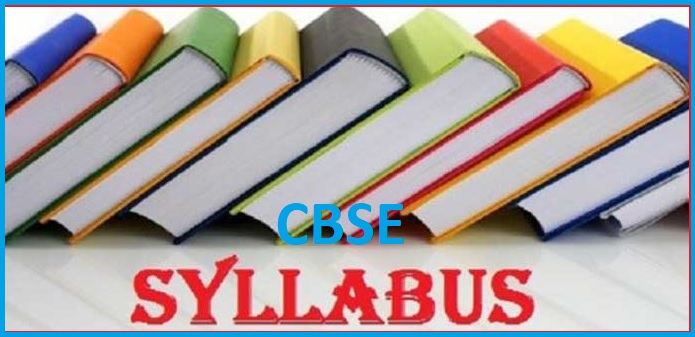The students who want to perform well in the 12th class board exam of commerce stream should read and completely understand the CBSE Class 12 Economics syllabus 2024-25. Economics is one of the toughest yet high-scoring subjects as far as the commerce stream is concerned. The 12th class economic examination consists of 80 marks theory paper along with 20 marks project work. This article provides in-depth details about the chapters and topics covered under the CBSE Class 12 syllabus for Economics subject.
CBSE Class 12 Economics Syllabus 2024-25
Before going through the syllabus for CBSE class 12th Economics you should understand the exam structure as illustrated in the table below and later we’ll share with you the unit-wise syllabus for both the terms.
| Units | Marks | Periods | |
| Part A | Introductory Macroeconomics | ||
| National Income and Related Aggregates | 10 | 30 | |
| Money and Banking | 06 | 15 | |
| Determination of Income and Employment | 12 | 30 | |
| Government Budget and the Economy | 06 | 17 | |
| Balance of Payments | 06 | 18 | |
| 40 | |||
| Part B | Indian Economic Development | ||
| Development Experience (1947-90) and Economic Reforms since 1991 | 12 | 28 | |
| Current Challenges facing Indian Economy | 20 | 50 | |
| Development Experience of India – A Comparison with Neighbours | 08 | 12 | |
| Theory Paper (40+40 = 80 Marks) | 40 | ||
| 200 | |||
| Part C | Project Work | 20 | 20 |
Part A: Introductory Macroeconomics
Unit 1: National Income and Related Aggregates 30 Periods
What is Macroeconomics?
Basic concepts in macroeconomics: consumption goods, capital goods, final goods, intermediate goods; stocks and flows; gross investment and depreciation.
Circular flow of income (two sector model); Methods of calculating National Income – Value Added or Product method, Expenditure method, Income method.
Aggregates related to National Income:
Gross National Product (GNP), Net National Product (NNP), Gross Domestic Product (GDP) and Net Domestic Product (NDP) – at market price, at factor cost; Real and Nominal GDP.
GDP and Welfare
Unit 2: Money and Banking 15 Periods
Money – meaning and functions, supply of money – Currency held by the public and net demand deposits held by commercial banks.
Money creation by the commercial banking system.
Central bank and its functions (example of the Reserve Bank of India): Bank of issue, Govt. Bank, Banker’s Bank, Control of Credit through Bank Rate, CRR, SLR, Repo Rate and Reverse Repo Rate, Open Market Operations, Margin requirement.
Unit 3: Determination of Income and Employment 30 Periods
Aggregate demand and its components.
Propensity to consume and propensity to save (average and marginal). Short-run equilibrium output; investment multiplier and its mechanism. Meaning of full employment and involuntary unemployment.
Problems of excess demand and deficient demand; measures to correct them – changes in government spending, taxes and money supply.
Unit 4: Government Budget and the Economy 17 Periods
Government budget – meaning, objectives and components. Classification of receipts – revenue receipts and capital receipts;
Classification of expenditure – revenue expenditure and capital expenditure. Balanced, Surplus and Deficit Budget – measures of government deficit.
Unit 5: Balance of Payments 18 Periods
Balance of payments account – meaning and components; Balance of payments – Surplus and Deficit
Foreign exchange rate – meaning of fixed and flexible rates and managed floating. Determination of exchange rate in a free market, Merits and demerits of flexible and fixed exchange rate.
Managed Floating exchange rate system
Part B: Indian Economic Development
Unit 6: Development Experience (1947-90) and Economic Reforms since 1991:
28 Periods
A brief introduction of the state of Indian economy on the eve of independence. Indian economic system and common goals of Five Year Plans.
Main features, problems and policies of agriculture (institutional aspects and new agricultural strategy), industry (IPR 1956; SSI – role & importance) and foreign trade.
Economic Reforms since 1991:
Features and appraisals of liberalisation, globalisation and privatisation (LPG policy); Concepts of demonetization and GST
Unit 7: Current challenges facing Indian Economy 60 Periods Human Capital Formation: How people become resource; Role of human capital in economic development; Growth of Education Sector in India
Rural development: Key issues – credit and marketing – role of cooperatives; agricultural diversification; alternative farming – organic farming
Employment: Growth and changes in work force participation rate in formal and informal sectors; problems and policies
Sustainable Economic Development: Meaning, Effects of Economic Development on Resources and Environment, including global warming
Unit 8: Development Experience of India: 12 Periods
A comparison with neighbours India and Pakistan
India and China
Issues: economic growth, population, sectoral development and other Human Development Indicators
Part C: Project in Economics 20 Periods
List of Prescribed Books
- Statistics for Economics, NCERT
- Indian Economic Development, NCERT
- Introductory Microeconomics, NCERT
- Macroeconomics, NCERT
- Supplementary Reading Material in Economics, CBSE
Note: The above publications are also available in Hindi Medium.
Check CBSE Revised Class 12th Economics Syllabus: Download
Also Check
CBSE Class 12th Syllabus (All Subjects)






I need class 12th economics both books (Indian Economic Development and Introductory Macroeconomics) 2020-21 pdf
i need cbse class 12th Economics syllabus 2020-21